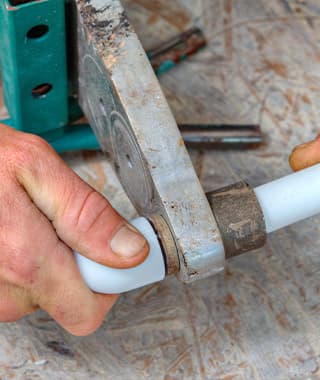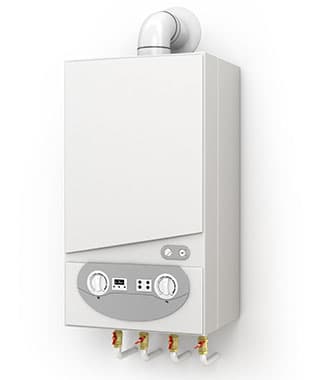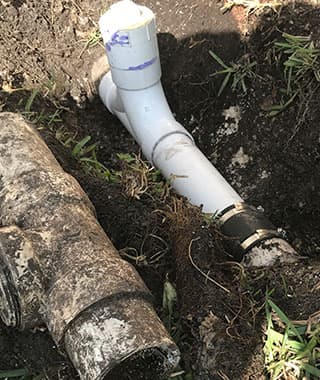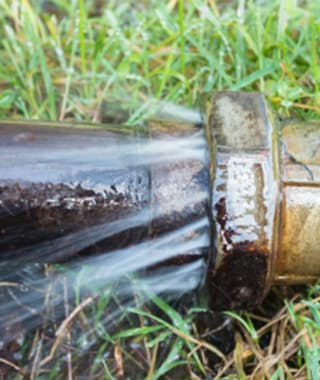Understanding Low Water Pressure
Experiencing low water pressure in your shower can be frustrating. Typically, several factors contribute to this issue.
Common causes of low water pressure in showers:
- Plumbing issues: Leaks, blockages, or corroded pipes often restrict water flow.
- Showerhead clogs: Mineral deposits can build up inside the showerhead, reducing the spray.
- Faulty valves: If the valves controlling water flow are partially closed or malfunctioning, pressure drops.
Impact of plumbing design and age on water flow:
Older plumbing systems might not support modern water demands. Over time, pipes corrode and narrow due to mineral buildup, impeding water movement. Homes built with smaller diameter pipes may also struggle to deliver adequate pressure to all fixtures simultaneously.
External factors like peak usage times affect pressure:
Water pressure can fluctuate based on demand within your local system. During peak hours—typically mornings and evenings when many people use water simultaneously—you’ll notice a significant drop in pressure.
Understanding these causes helps you identify specific actions to boost your shower’s performance.
Quick
1. Turn Off Other Appliances During Showers
Low water pressure in the shower can often be caused by the simultaneous use of other water-consuming appliances in your home. Maximizing water pressure in your shower involves managing how and when these appliances are used.
Household appliances affecting shower pressure include:
- Washing machines
- Dishwashers
- Toilets
These devices draw water away from your shower, leading to a noticeable drop in pressure. Scheduling your showers when these appliances are not in use can significantly improve your experience.
Fixes to Boost Shower Water Pressure
Tips for Timing Your Showers:
- Identify High-Demand Times:
- Morning and evening hours typically see higher water usage.
- Coordinate with household members to stagger usage.
- Appliance Scheduling:
- Run dishwashers and washing machines during off-peak hours.
- Avoid flushing toilets right before or during your shower.
- Manual Interventions:
- Temporarily turn off appliances if you need an immediate boost in water pressure.
- Wait until laundry or dishwashing cycles are complete before taking a shower.
By controlling the use of other water-intensive devices, you maintain a more consistent and stronger flow in your shower, enhancing your overall bathing experience.
2. Shower During Off-Peak Hours for Better Flow
Identifying off-peak hours in your area can be a game-changer in maximizing water pressure in your shower. Typically, these periods include early mornings and late nights when fewer people are using household appliances that affect shower pressure.
Benefits of scheduling showers during off-peak hours:
- Enhanced Water Pressure: With reduced demand on the water supply, you experience stronger and more consistent water flow.
- Efficient Use of Resources: Taking a shower when fewer people are using water helps maintain a balanced system, preventing sudden drops in pressure.
Experiment with different times to find what works best for your household. This simple adjustment can make a noticeable difference without the need for complex solutions.
3. Check Your Shower Valves for Optimal Performance
Valves play a crucial role in controlling water flow within your shower system. They regulate the volume and pressure of water reaching your showerhead.
Steps for Shower Valve Inspection:
- Locate the Valves: Find the main water valve and any individual shut-off valves connected to your shower.
- Ensure Full Opening: Confirm that all valves are fully open, as partially closed valves can significantly restrict water flow.
- Inspect for Damage: Look for signs of wear, corrosion, or leaks around the valves which might impede water pressure.
- Test Functionality: Turn the shower on and off while observing any changes in pressure to identify potential valve issues.
By ensuring optimal performance of these valves, you can maximize water pressure in your shower without diving into more complex solutions. Regular inspection helps maintain consistent water flow and enhances overall shower experience.
Maintenance Tips for Improved Water Pressure in Showers

1. Unkink or Replace Your Shower Hose as Needed
A kinked or damaged shower hose can significantly restrict water flow, leading to frustratingly low water pressure. This common issue often goes unnoticed, but it can make a substantial difference once addressed.
Identifying Kinked Hose Issues:
- Inspect your shower hose for visible kinks or bends.
- Run water through the hose and observe any irregularities in flow.
- A noticeable decrease in pressure may indicate a hidden kink or internal damage.
Repair vs. Replacement:
- Repair: If the hose is not severely damaged, unkinking and straightening it out can sometimes restore normal water flow. Ensure the hose is properly aligned without any sharp bends.
- Replacement: In cases where the hose is worn out or repeatedly kinks, replacing it may be the best solution. Look for high-quality, flexible hoses designed to withstand bending and twisting.
Tips for Effective Hose Maintenance:
- Regular Inspection: Periodically check your shower hose for any signs of wear and tear.
- Proper Storage: When not in use, ensure the hose is stored without sharp bends to prevent future kinks.
- High-Quality Hoses: Invest in a durable, anti-kink shower hose to minimize future problems.
Implementing these shower hose maintenance tips can boost low water pressure in your shower, providing a more enjoyable bathing experience. Regular checks and timely replacements are essential practices to keep your water flow optimal.
2. Clean or Replace Your Showerhead for Better Performance
Keeping your showerhead free from mineral deposits is crucial for maintaining optimal water flow. Over time, mineral buildup can clog the tiny holes in the showerhead, leading to reduced pressure. To clean it:
- Soak the showerhead in a solution of white vinegar and water for a few hours.
- Use a brush to scrub away any remaining deposits.
If cleaning doesn’t restore adequate pressure, consider replacing your showerhead. High-pressure models are designed to enhance water flow, providing a more invigorating experience. Look for features like:
- Aerating technology: Mixes air with water to increase perceived pressure.
- Adjustable spray settings: Allows you to customize the flow according to your preference.
Regular maintenance can help prevent low-pressure issues from occurring. By incorporating these shower hose maintenance tips into your routine, you’ll boost performance and enjoy a better shower experience.
3. Consider Upgrading Your Shower Valve if It’s Faulty or Outdated
Faulty valves can significantly impact your shower’s water pressure. Here are some signs that a valve might be the culprit:
- Inconsistent Water Flow: If your water pressure fluctuates frequently, it could indicate a malfunctioning valve.
- Unresponsive Controls: Difficulty in adjusting water temperature or flow often points to valve issues.
- Visible Leaks: Water dripping from the valve area is a clear sign of damage.
Upgrading your old or faulty valves offers several benefits:
- Improved Water Pressure: Modern valves ensure more consistent and higher water flow.
- Enhanced Durability: Newer models are designed to last longer and require less maintenance.
- Better Temperature Control: Advanced valves provide precise control over water temperature, enhancing your shower experience.
Regular maintenance and timely upgrades can help prevent low-pressure issues. Keeping an eye out for these signs and knowing when to upgrade ensures optimal shower performance.
Plumbing Upgrades to Consider for Better Water Flow in Showers
1. Inspect and Upgrade Your Pipes if They’re Corroded or Insufficiently Sized
How corroded pipes contribute to low-pressure problems:
- Restricted Flow: Corrosion and mineral deposits inside pipes decrease the space available for water to travel through, limiting the overall flow rate.
- Increased Friction: Rough surfaces caused by corrosion increase friction within the pipe, further impeding water movement.
- Potential Leaks: Corroded areas are more prone to developing leaks, which can further reduce pressure and waste water.
Considerations when upgrading to larger diameter pipes for enhanced performance:
- Assess Current Pipe Condition: Begin by inspecting your existing plumbing system. Look for signs of corrosion, such as discolored water, visible rust on exposed pipes, or unusual noises in your plumbing.
- Select Appropriate Materials: When replacing old or corroded pipes, choose materials known for their durability and resistance to corrosion. Options include copper, PEX (cross-linked polyethylene), or CPVC (chlorinated polyvinyl chloride).
- Increase Pipe Diameter: Upgrading to larger diameter pipes can significantly enhance water flow capacity. For instance, moving from a 1/2-inch pipe to a 3/4-inch pipe increases the volume of water that can pass through by more than double.
- Professional Installation: For best results, consider hiring a professional plumber to ensure proper installation and compliance with local building codes.
By addressing pipe corrosion and considering upgrades to larger diameter pipes, you can effectively boost your shower’s water pressure and improve overall performance throughout your home’s plumbing system.
2. Installing a Shower Pump: A Solution Worth Exploring?
Using a shower pump can significantly enhance water flow rates, making it an effective solution for boosting low water pressure. This device works by increasing the force of water moving through your pipes, ensuring a more robust and consistent flow.
Key points to consider before installing a shower pump:
- Pipe Compatibility: Ensure your existing plumbing can handle the increased pressure. Older or corroded pipes may need upgrading to avoid potential leaks or bursts.
- Electrical Requirements: Shower pumps require an electrical connection, so you may need professional installation to ensure safety and compliance with local codes.
- Noise Levels: Some pumps can be noisy; consider models designed for quieter operation if this is a concern.
- Cost and Maintenance: While effective, shower pumps can be costly upfront and may require regular maintenance to operate efficiently.
By addressing these factors, you can determine if a shower pump is the right choice for improving your overall shower experience.
3. Removing Flow Restrictors: Pros and Cons Explained
Flow restrictors are designed to limit the amount of water passing through faucets and showerheads, conserving water and reducing utility bills. However, these devices can significantly impact your shower’s water pressure.
Benefits of Removing Flow Restrictors:
- Improved Water Flow: Removing the restrictor can enhance water flow, providing a stronger, more satisfying shower experience.
- Enhanced Performance: For households with inherently low pressure due to pipe corrosion or other plumbing issues, removing the restrictor can offer immediate relief.
Drawbacks to Consider:
- Increased Water Usage: Higher water consumption can lead to increased utility bills and may not align with eco-friendly practices.
- Potential Plumbing Strain: Enhanced flow might highlight existing issues in your plumbing system, necessitating upgrades like larger diameter pipes to handle the increased capacity.
Balancing these pros and cons helps determine if removing flow restrictors is a viable solution for boosting your shower’s water pressure.
When All Else Fails: Troubleshooting Persistent Low Water Pressure Issues In Showers
If low water pressure persists despite your best efforts, consider these steps:
- Pressure Booster Systems: As a last resort option, installing a pressure booster system can provide a significant improvement. These systems are designed to increase the water pressure throughout your home.
- Consult a Professional: Sometimes, persistent low pressure issues require the expertise of a professional plumber who can diagnose and fix underlying problems.
By exploring these options, you can tackle even the most stubborn low water pressure issues effectively.










